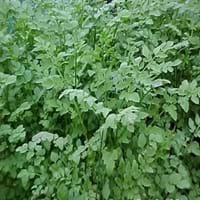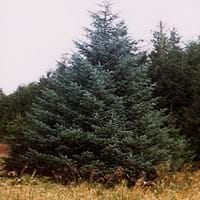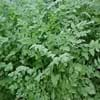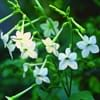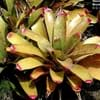Life Span
Perennial
Perennial
Type
Tender Perennial
Tree
Origin
Southern Asia, Southeastern Asia, India, China, Japan, Australia
Eastern Asia
Types
Not Available
Black Spruce, Norway Spruce, Colorodo Spruce
Number of Varieties
Not Available
Habitat
Bog Garden, Cultivated Beds, Ponds
By seashore, Humid climates, Temperate Regions
USDA Hardiness Zone
9-11
6-8
AHS Heat Zone
Not Available
8-2
Sunset Zone
H1, 9, 14, 15, 16, 17, 18, 19, 20, 21, 22, 23, 24
A3, 2a, 2b, 3a, 3b, 4, 5, 6, 7, 8, 9, 10, 12, 14, 15, 16, 17, 18, 19, 20, 21, 22, 23, 24
Habit
Spreading
Oval or Rounded
Flower Color Modifier
Bicolor
Bicolor
Fruit Color
Not Available
Red, Green
Leaf Color in Spring
Green
Green, Light Green
Leaf Color in Summer
Green
Green
Leaf Color in Fall
Green
Red, Crimson
Leaf Color in Winter
Light Green
Not Available
Leaf Shape
simple-pinnate or double-pinnate
Acicular
Plant Season
Summer, Fall
Spring, Summer, Fall, Winter
Sunlight
Full Sun, Partial Sun, Partial shade
Full Sun, Partial Sun, Partial shade
Type of Soil
Clay, Loam, Sand
Clay, Loam, Sand
The pH of Soil
Acidic, Neutral, Alkaline
Acidic, Neutral
Soil Drainage
Poorly Drained
Average
Bloom Time
Late Summer, Early Fall
Early Spring, Spring, Late Spring, Early Summer
Tolerances
Drought
Heat Tolerance, Humidity, Light Frost
Where to Plant?
Ground
Ground
How to Plant?
Divison, Layering, Seedlings, stem tip cuttings
Seedlings, Spores
Plant Maintenance
Medium
Medium
Watering Requirements
Needs Very high moisture
Needs less watering
In Summer
Lots of watering
Lots of watering
In Spring
Moderate
Moderate
In Winter
Average Water
Average Water
Soil pH
Acidic, Neutral, Alkaline
Acidic, Neutral
Soil Type
Clay, Loam, Sand
Clay, Loam, Sand
Soil Drainage Capacity
Poorly Drained
Average
Sun Exposure
Full Sun, Partial Sun, Partial shade
Full Sun, Partial Sun, Partial shade
Pruning
Remove dead leaves
Prune when young, Remove dead branches
Fertilizers
Apply 10-10-10 amount
slow-release fertilizers
Pests and Diseases
Aphids, Armyworm, Bacterial Blight, Damping off, Downy mildew
Aphids, Birds, Snails
Plant Tolerance
Drought
Heat Tolerance, Humidity, Light Frost
Flowers
Showy
Insignificant
Flower Petal Number
Single
Single
Fragrant Flower
Not Available
No
Fragrant Leaf
Not Available
No
Fragrant Bark/Stem
Not Available
No
Foliage Texture
Fine
Fine
Foliage Sheen
Matte
Matte
Attracts
Bees, Flies, Insects
Ants, Fruit Bats, Snails, Squirrels
Allergy
no allergic reactions
Constipation, Diarrhea, Dizziness, Sore eyes
Aesthetic Uses
Bog Garden, Ground Cover
Showy Purposes
Beauty Benefits
Not Available
For treating wrinkles, Making cosmetics, Speed hair growth
Edible Uses
Yes
Sometimes
Environmental Uses
Air purification
Agroforestry, Air purification, Nesting sites for birds, soil stabilisation
Medicinal Uses
Depurative, Febrifuge, Styptic
anti-inflammatory, Back pain, Emollient, Immunity, Obesity
Part of Plant Used
Leaves, Root, Seeds
Leaf Stalks, Root
Other Uses
Used as a seasoning in soups, useful as a ground cover
Constructing Boats, Making piano frames, Used as fuel, Used in Furniture, Used in making musical instruments, Used in paper industry, Used in pencil industry
Used As Indoor Plant
No
No
Used As Outdoor Plant
Yes
Yes
Garden Design
Container, Edible, Groundcover, Herb / Vegetable, Water Gardens
Container, Feature Plant, Mixed Border, Topiary / Bonsai / Espalier
Botanical Name
OENANTHE javanica
ACER palmatum 'Osakazuki'
Common Name
Java Water Dropwort, Water Celery, Water Parsley
Japanese Maple, Osakasuki Japanese Maple
In Hindi
Water Celery
सरल
In German
Wasser Sellerie
Fichten
In French
Céleri d'eau
Picea
In Spanish
El apio agua
Picea
In Greek
Σέλινο νερό
Spruce
In Portuguese
Aipo água
Picea
In Polish
Seler Woda
Świerk
In Latin
Aqua Apium
Picea
Phylum
Magnoliophyta
Pinophyta
Class
Magnoliopsida
Pinopsida
Family
Apiaceae
Aceraceae
Clade
Angiosperms, Asterids, Eudicots
Not Available
Tribe
Oenantheae
Not Available
Subfamily
Apioideae
Piceoideae
Importance of Water Celery and Sitka Spruce
Want to have the most appropriate plant for your garden? You might want to know the importance of Water Celery and Sitka Spruce. Basically, these two plants vary in many aspects. Compare Water Celery and Sitka Spruce as they differ in many characteristics such as their life, care, benefits, facts, etc. Every gardener must at least have the slightest clue about the plants he wants to plant in his garden. Compare their benefits, which differ in many ways like facts and uses. The medicinal use of Water Celery is Depurative, Febrifuge and Styptic whereas of Sitka Spruce is anti-inflammatory, Back pain, Emollient, Immunity and Obesity. Water Celery has beauty benefits as follows: Not Available while Sitka Spruce has beauty benefits as follows: Not Available.
Compare Facts of Water Celery vs Sitka Spruce
How to choose the best garden plant for your garden depending upon its facts? Here garden plant comparison will help you to solve this query. Compare the facts of Water Celery vs Sitka Spruce and know which one to choose. As garden plants have benefits and other uses, allergy is also a major drawback of plants for some people. Allergic reactions of Water Celery are no allergic reactions whereas of Sitka Spruce have Constipation, Diarrhea, Dizziness and Sore eyes respectively. Having a fruit bearing plant in your garden can be a plus point of your garden. Water Celery has no showy fruits and Sitka Spruce has no showy fruits. Also Water Celery is not flowering and Sitka Spruce is not flowering . You can compare Water Celery and Sitka Spruce facts and facts of other plants too.
